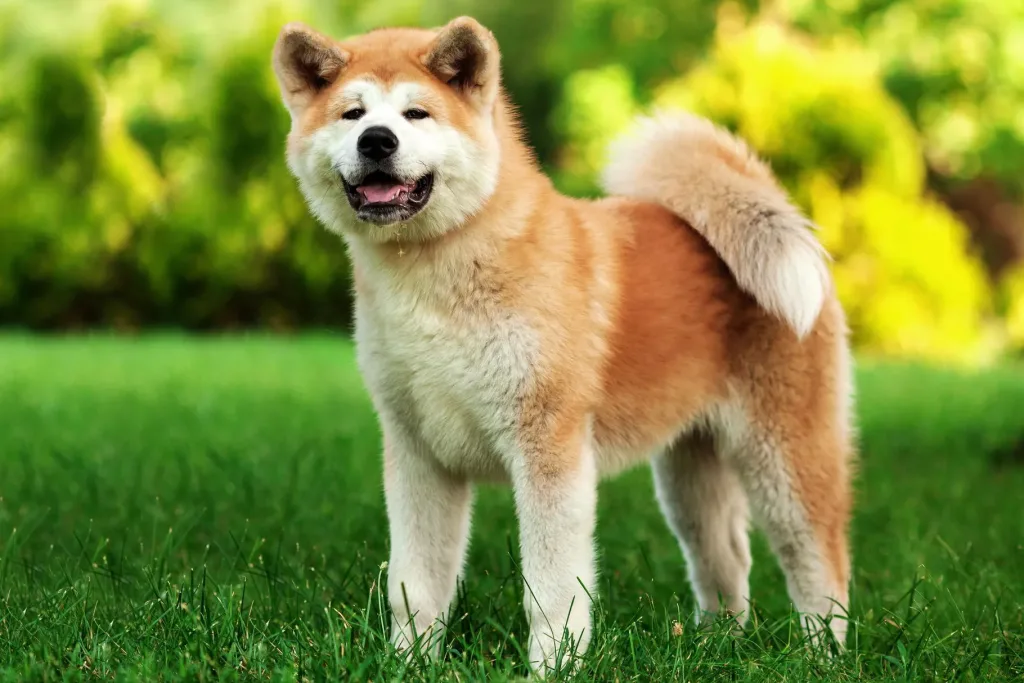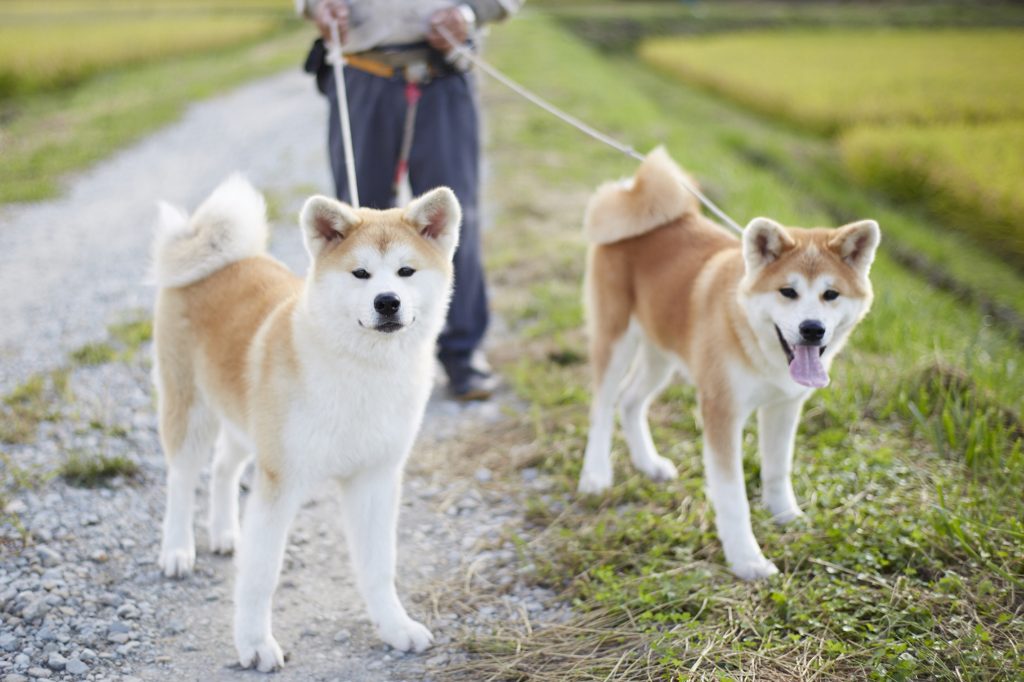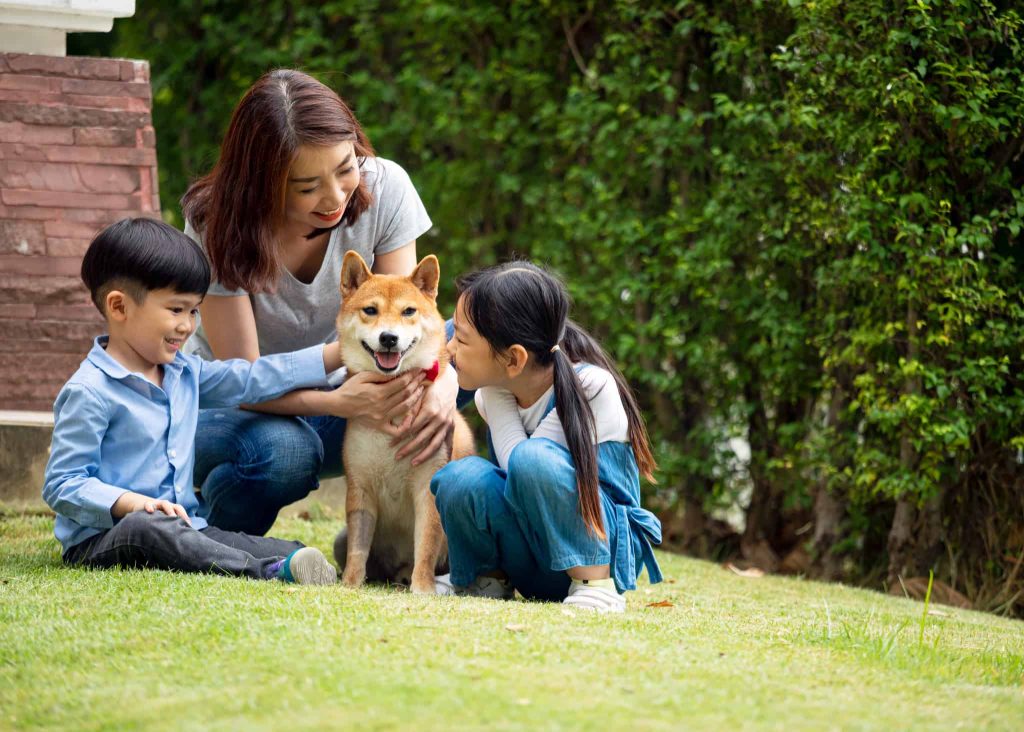Are you considering getting an Akita breed dog as a pet? If so, you are in for a loyal and devoted companion. Akitas are known for their grace, strength, and intelligence. They are also fiercely protective of their owners and make excellent watchdogs. However, before making the decision to bring an Akita into your home, it is important to understand their unique temperament and care requirements. In this article, we will explore the pros and cons of owning an Akita and provide you with the information you need to make an informed decision.
Breed Category: Working
Country of Origin: Japan
Average Size:61-71 cm (at the shoulder)
Average Weight:34-54 kg
Average Life Span: 10-12 years
Grooming Requirements: Moderate
Exercise Requirements:High
History and Origin
The Akita is a large and powerful breed of dog that originated in Japan. The breed is named after the Akita Prefecture, which is located in the northern part of the country. The Akita is a highly respected breed in Japan and is considered a national treasure. The breed has a long and fascinating history that dates back hundreds of years.
The Akita is believed to have descended from the Matagi dog, which was used for hunting in the mountainous regions of Japan. The Matagi dog was a fierce and loyal hunter, and it is thought that the Akita inherited many of these traits. The Akita was originally used for hunting large game, such as wild boar and deer, but it was also used as a guard dog and a fighting dog.
In the 1600s, the Akita was used as a fighting dog in Japan. The breed was highly prized for its strength and courage, and it was often pitted against other dogs in brutal fights. However, in the 1800s, the Japanese government banned dog fighting, and the Akita was no longer used for this purpose.
During World War II, the Akita was almost driven to extinction. Many of the dogs were killed for their fur, and others were used as food. However, a group of dedicated breeders worked to save the breed, and today the Akita is thriving in Japan and around the world.
In 1931, the Akita was officially recognized as a national treasure in Japan. The breed was also recognized by the American Kennel Club in 1972. Today, the Akita is a popular breed in many countries, including the United States, Canada, and the United Kingdom.
The Akita is known for its loyalty and devotion to its family. The breed is also highly intelligent and can be trained to perform a variety of tasks. However, the Akita can be stubborn and independent, and it requires a firm and consistent hand in training.
In conclusion, the Akita is a fascinating breed with a long and rich history. From its origins as a hunting and fighting dog to its status as a national treasure in Japan, the Akita has played an important role in the culture and history of its home country. Today, the breed is beloved by many people around the world for its loyalty, intelligence, and strength.

Size and Breed Category
The Akita is a large breed of dog that falls under the category of working dogs. They are known for their muscular build and powerful appearance. A fully grown Akita can weigh anywhere between 34-54 kg and stand at a height of 61-71 cm at the shoulder. They have a broad head with triangular ears that stand erect. Their thick double coat comes in a variety of colours including white, brindle, fawn, and red. The Akita’s tail is thick and curls over their back. They have a dignified and confident gait that exudes strength and power.
The Akita is a breed that originated in Japan and was originally used for hunting and guarding. They are known for their loyalty and devotion to their owners. Akitas are intelligent and independent dogs that require consistent training and socialisation from a young age. They are protective of their family and can be wary of strangers. Akitas are not recommended for first-time dog owners as they require an experienced handler who can provide them with the necessary exercise and mental stimulation. Overall, the Akita is a majestic and impressive breed that requires a dedicated owner who can provide them with the care and attention they need.
Fur Length and Colour
The Akita is a breed of dog that is known for its thick and luxurious fur. The fur of the Akita is typically medium to long in length, with a dense undercoat and a longer, coarser outer coat. The fur is straight and stands off the body, giving the Akita a regal and majestic appearance. The fur of the Akita comes in a variety of colours, including white, brindle, red, fawn, and sesame. The white Akita is perhaps the most well-known, with its pure white fur and striking black mask. The brindle Akita has a coat that is a mix of black and brown, while the red Akita has a deep, rich red coat. The fawn Akita has a lighter, creamier coat, while the sesame Akita has a coat that is a mix of black and red hairs. Overall, the fur of the Akita is one of its most distinctive features, and is a key part of what makes this breed so beloved by dog lovers around the world.
The fur of the Akita is not only beautiful, but also serves an important purpose. The thick, dense fur helps to protect the Akita from the cold, making it well-suited to colder climates. The fur also helps to protect the Akita from the sun, as it provides a natural barrier against harmful UV rays. In addition, the fur of the Akita is relatively easy to care for, requiring only occasional brushing to keep it looking its best. However, it is important to note that the fur of the Akita does shed, particularly during the spring and fall months. Regular grooming can help to minimize shedding and keep the fur looking healthy and shiny. Overall, the fur of the Akita is a key part of what makes this breed so unique and special, and is one of the many reasons why so many people love these beautiful dogs.

Termperament and Trainability
Akita is a breed of dog that is known for its strong-willed and independent temperament. They are highly intelligent and have a natural instinct to protect their family and territory. Akitas are loyal and affectionate towards their owners, but they can be wary of strangers and other animals. They require early socialization and training to prevent any aggressive behavior. Akitas are not recommended for first-time dog owners as they need an experienced handler who can establish themselves as the pack leader. They are not a breed that can be left alone for long periods as they thrive on human companionship. Akitas are known for their stubbornness, and it can take time and patience to train them. However, with consistent training and positive reinforcement, they can excel in obedience and agility.
The trainability of the Akita is often debated among dog enthusiasts. Some believe that Akitas are difficult to train due to their independent nature, while others argue that they are highly trainable with the right approach. Akitas respond well to positive reinforcement training methods, such as clicker training and reward-based training. Harsh training methods or physical punishment can lead to aggression and mistrust towards their handler. Akitas have a strong prey drive, and it is essential to teach them to control their impulses around small animals. They also need to be taught to walk on a leash without pulling as they are a powerful breed. Akitas are intelligent and can quickly become bored with repetitive training, so it is essential to keep training sessions short and engaging. With patience, consistency, and positive reinforcement, Akitas can be trained to be well-behaved and obedient companions.

Known Health Conditions
Akita is a breed of dog that is prone to certain health conditions. One of the most common health issues that affect Akitas is hip dysplasia. This condition occurs when the hip joint does not develop properly, leading to pain and discomfort. Akitas may also suffer from elbow dysplasia, which is a similar condition affecting the elbow joint. Another health concern for Akitas is progressive retinal atrophy, a degenerative eye disease that can lead to blindness. Additionally, Akitas may be prone to autoimmune diseases, such as lupus and hypothyroidism. These conditions can cause a range of symptoms, including fatigue, weight gain, and joint pain.
Another health condition that Akitas may experience is gastric torsion, also known as bloat. This is a life-threatening condition that occurs when the stomach fills with gas and twists on itself, cutting off blood flow. Akitas may also be prone to allergies, which can cause skin irritation, itching, and hair loss. Additionally, Akitas may develop a condition called sebaceous adenitis, which affects the skin and hair follicles. This condition can cause hair loss, scaly skin, and a foul odor. Finally, Akitas may be at risk for certain types of cancer, including lymphoma and osteosarcoma. These conditions can be difficult to treat and may require aggressive medical intervention.
Openness to Strangers
Akita dogs have a reputation for being reserved and cautious around strangers. They are not typically outgoing or friendly towards people they do not know. This trait is rooted in their history as guard dogs and hunters in Japan. Akitas were bred to be independent thinkers and to make decisions on their own, which means they are not always eager to please their owners or to make friends with strangers. However, with proper socialization and training, Akitas can learn to tolerate and even enjoy the company of new people.
Despite their initial wariness of strangers, Akitas can be fiercely loyal and protective of their families. They are known for their courage and bravery, and will not hesitate to defend their loved ones if they feel threatened. This protective instinct can sometimes be misinterpreted as aggression, especially if the dog is not properly trained or socialized. It is important for owners of Akitas to understand their dog’s temperament and to provide them with the appropriate training and socialization to ensure they are well-behaved and safe around strangers.
Playfulness Level
The Akita is a highly intelligent and energetic breed of dog that loves to play. They are known for their playful nature and their ability to keep themselves entertained for hours on end. Whether it’s playing fetch, chasing after a ball, or simply running around in circles, the Akita is always up for a good game. They are also very social animals and love to interact with their owners and other dogs. This makes them a great choice for families with children or other pets.
Despite their playful nature, the Akita is also a very loyal and protective breed. They are known for their strong sense of loyalty and their willingness to defend their owners and their property. This makes them an excellent choice for families who are looking for a dog that can provide both companionship and protection. However, it is important to note that the Akita can be quite stubborn at times, and may require some patience and persistence when it comes to training. Overall, the Akita is a wonderful breed of dog that is sure to bring joy and happiness to any household.
Suitability as a Pet for Children
Akita is a Japanese dog breed that is known for its loyalty and protective nature. They are intelligent and independent dogs that require a firm and consistent training approach. Akitas can be great pets for children who are taught to respect their boundaries and understand their needs. They are not overly energetic dogs and can adapt well to apartment living as long as they get enough exercise and mental stimulation. Akitas have a thick double coat that requires regular grooming to keep it in good condition. They are generally healthy dogs but can be prone to certain health issues such as hip dysplasia and eye problems. Overall, Akitas can make wonderful pets for the right family who can provide them with the care and attention they need.
Exercise Needs
Akitas require a significant amount of exercise to maintain their physical and mental health. As a large breed, they need plenty of space to run and play, making them better suited to homes with a garden or access to open spaces. A daily walk of at least an hour is recommended, but they will benefit from additional exercise such as hiking, swimming, or playing fetch. It is important to note that Akitas have a high prey drive and should always be kept on a leash or in a secure area to prevent them from chasing after small animals. Regular exercise will also help prevent obesity, which can lead to health problems such as joint issues and heart disease.
In addition to physical exercise, Akitas also require mental stimulation to prevent boredom and destructive behavior. Training sessions and interactive toys can provide mental stimulation and help strengthen the bond between the dog and their owner. Akitas are intelligent and independent, so training should be consistent and firm but also positive and rewarding. Socialization is also important for Akitas to prevent aggression towards other dogs and strangers. Early socialization and exposure to different people, animals, and environments can help Akitas become well-adjusted and confident adults.

Suitability for a Multi-Pet Family
Akita dogs have a reputation for being independent and strong-willed. They have a natural instinct to protect their family and territory, which can sometimes lead to aggression towards other animals. However, with proper socialization and training, Akita dogs can learn to coexist peacefully with other pets in the household. It is important to introduce them to other animals at a young age and supervise their interactions to ensure everyone’s safety.

Housing Requirements
Akita dogs require a living space that is large enough to accommodate their size and energy levels. They need a minimum of 30 square meters of living space, which should be divided into indoor and outdoor areas. The indoor area should be well-ventilated and have enough space for the dog to move around comfortably. The outdoor area should be securely fenced and have enough space for the dog to run and play. Akitas are known for their love of digging, so the outdoor area should be designed to prevent them from digging under the fence. Additionally, Akitas are sensitive to extreme temperatures, so their living space should be equipped with heating and cooling systems to ensure their comfort.
Akitas require a comfortable sleeping area that is separate from their living space. The sleeping area should be large enough to accommodate the dog’s size and provide enough space for them to stretch out. Akitas are known for their thick coats, so their sleeping area should be well-ventilated to prevent overheating. Additionally, Akitas are prone to joint problems, so their sleeping area should be equipped with a comfortable and supportive bed. Akitas are also known for their cleanliness, so their sleeping area should be kept clean and free of debris. Regular cleaning and maintenance of their living space and sleeping area are essential to ensure the health and well-being of Akitas.
Summary
Akita dogs have a reputation for being loyal and protective of their owners. They are known to be independent and strong-willed, which can make them challenging to train. Akitas require a lot of exercise and mental stimulation to keep them happy and healthy. They are not recommended for first-time dog owners or families with young children. Akitas can be aggressive towards other dogs and animals, so they need to be socialized from a young age. Overall, Akitas can make great pets for experienced dog owners who are willing to put in the time and effort to train and care for them properly.
Akita Dog FAQS
Akitas can be stubborn and independent, making them challenging to train. Consistent and positive training methods are recommended.
Akitas are known for their protective nature and can make good guard dogs. However, proper socialization is important to prevent aggression towards strangers.
Akitas can be good with children if they are socialized properly from a young age. However, they should always be supervised around children.
Akitas are prone to certain health issues, such as hip dysplasia, eye problems, and autoimmune diseases. Regular vet check-ups are important.
Akitas have a thick double coat that requires regular brushing and occasional bathing. They also need their nails trimmed and ears cleaned regularly.
Yes, Akitas shed a lot, especially during shedding season. Regular grooming can help manage shedding.
Akitas have a lifespan of 10-12 years on average.
Akitas need at least 1-2 hours of exercise per day, including walks and playtime.
An Akita can grow up to 71-81 cm in height.
The average weight of an Akita is between 34-54 kg.
